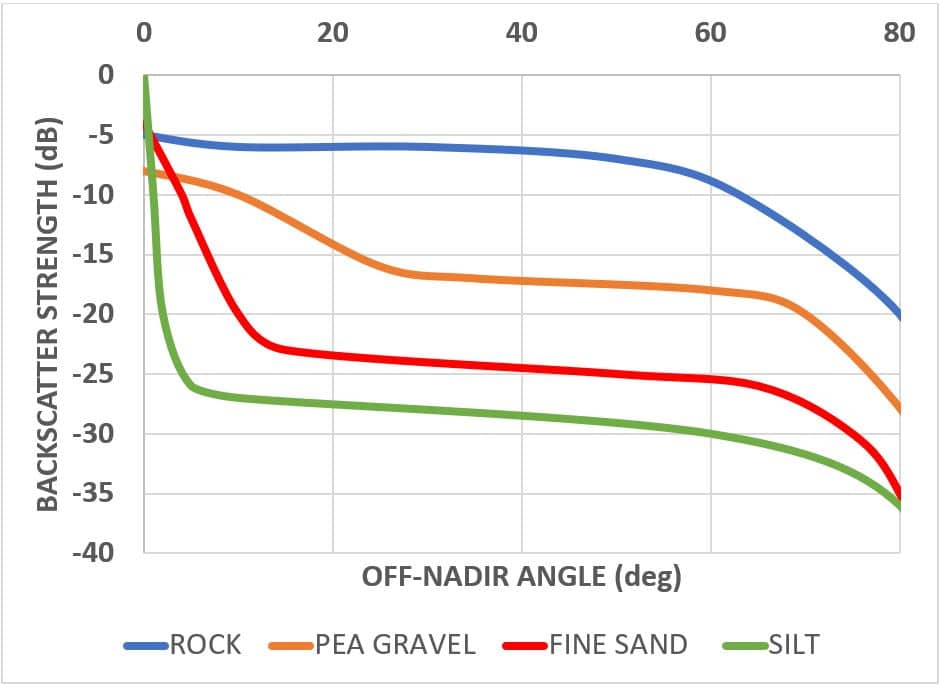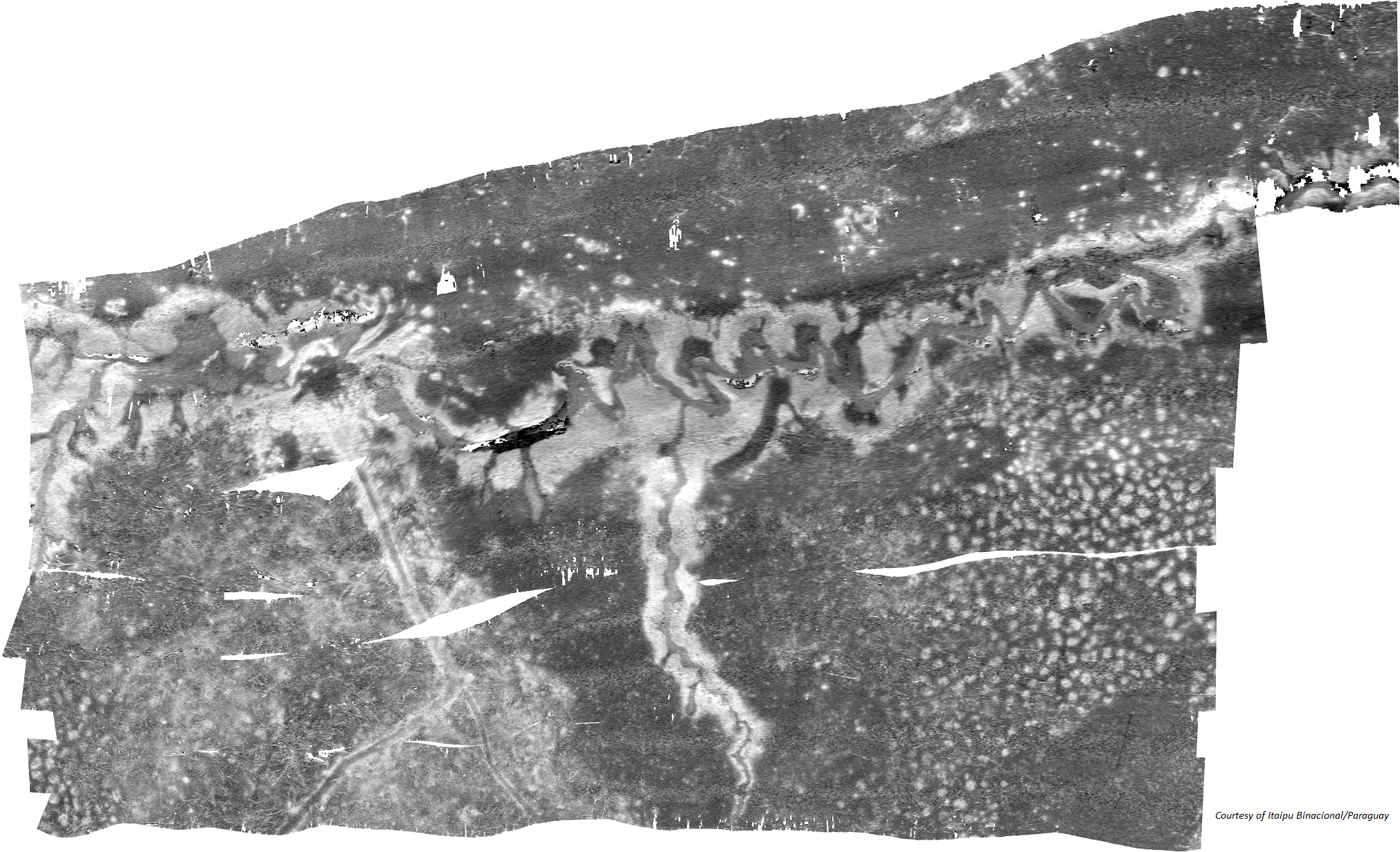The short answer is NO!
The construction of a high-resolution backscatter mosaic starts with acquiring backscatter data with a multibeam sonar. Then, this data goes through several post-survey processing steps, one of which is called “normalization” (or “cross-track normalization” to be precise).
Indeed, there are cross-track variations in the amplitude of the backscatter, which are caused by:
- The grazing angle
- The fact that the backscatter exhibits a non-uniform angular response
The normalization process gets rid of cross-track variations by removing the angular dependence of the acoustic backscatter for off-nadir returns, while maintaining spatial changes in the backscatter amplitudes that could indicate differences in the morphology of the seafloor.
It is important to notice that, to date, there are no universally accepted methods for making “normalization” corrections.
The normalization step is included in several commercial post-processing software, and although it is difficult to explain the differences between each of them because the techniques used are proprietary and not disclosed, they all deliver mosaics that are pleasing to the eye and useful for pinpointing differences in the character of the seafloor.
Such results are NOT dependent on whether the backscatter data is calibrated or not.
How does the normalization work?
As mentioned earlier, the reason for “normalizing” relies on the fact that the backscatter amplitudes vary with the off-nadir angle. The following figure illustrates this variation by representing the backscatter strength across off-nadir angles ranging from 0° to 80° for four different types of bottom: rock, pea gravel, fine sand and silt.

Backscatter Strength by Type of Bottom
Three bands can be differentiated:
- Band 1 for off-nadir angles between 0° and 20°
- The acoustic backscatter tends to be higher than for the other two bands
- The backscatter strength for rock and pea gravel bottoms depends on the characteristics of the seafloor (surface scattering)
- The backscatter strength for fine sand and silt bottoms is characterized by a regular reflection (or specular reflection) of the return
- Band 2 for off-nadir angles between 20° and 60°
- It’s characterized by a “central plateau” where the scattering strength depends more strongly on particulars of the seafloor than the specific off-nadir angle
- Band 3 for off-nadir angles between 60° and 80°
- There tends to be a rapid fall-off in backscatter strength due to greater grazing angles
- The backscatter strength depends significantly less on the characteristics of the seafloor
The “normalization” assumes that for the area surveyed, the particulars of the seafloor are uniform. This assumption justifies using this data to develop a baseline angular response function, which is multibeam echosounder-specific and location-specific. Because the baseline angular response is defined for a specific area surveyed and with a specific multibeam sonar, it can be said that it is also dependent on the operating frequency of the multibeam echosounder.
During the normalization process, the backscatter data collected is compared with the one of the baseline angular response function. To be more precise, the baseline angular response function is subtracted from the backscatter data acquired and the “central plateau” values of the baseline function is added to each of those differences.
This scheme for normalization of multibeam backscatter replaces the angle-dependent backscatter with backscatter values that are independent from the off-nadir angle.
Results
As a result, at times, the mosaic shows stripes that come from assuming that the baseline function adequately represents the totality of the properties of the seafloor in a given survey area.
Conclusion
A mosaic of a normalized backscatter presents spatial variations in the backscatter strength under the imaginary circumstance that each and every backscatter data represented in the mosaic was acquired at an angle in the “central plateau” in the baseline function.

